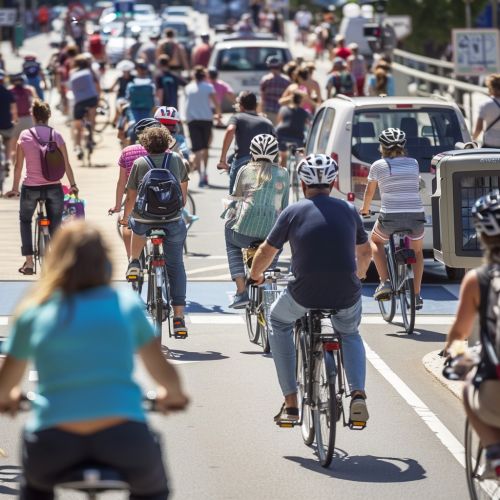Bicycle culture
Introduction
Bicycle culture refers to a culture that supports the use of bicycles or human-powered transportation. In cities where bicycle culture is strong, cycling is a dominant mode of transportation and is incorporated into daily life. This culture is often associated with active lifestyle, environmental sustainability, and urban planning initiatives. Urban planning plays a significant role in promoting bicycle culture by creating infrastructure that makes cycling safe and convenient.
History
The history of bicycle culture can be traced back to the invention of the bicycle in the 19th century. The bicycle was initially seen as a novelty, but it quickly became a popular mode of transportation. The bicycle's popularity grew in the late 19th and early 20th centuries, particularly in Europe and North America. However, the advent of the automobile in the 20th century led to a decline in bicycle use. In recent decades, there has been a resurgence of interest in cycling, particularly in urban areas. This resurgence has been driven by concerns about environmental sustainability, health, and quality of life.
Characteristics
Bicycle culture is characterized by a number of factors. These include the prevalence of bicycle use, the presence of bicycle infrastructure, and societal attitudes towards cycling. In cities with a strong bicycle culture, cycling is seen as a normal and desirable mode of transportation. There is often a strong community of cyclists, and cycling is integrated into many aspects of daily life, including commuting, shopping, and socializing. Bicycle culture also tends to be associated with a broader culture of sustainability and active living.
Bicycle Infrastructure
Infrastructure plays a crucial role in promoting bicycle culture. This includes the presence of bicycle lanes, bicycle parking facilities, and bicycle sharing systems. Bicycle sharing systems are a common feature of cities with a strong bicycle culture. These systems allow users to rent bicycles on a short-term basis, providing a convenient and affordable option for short trips. Bicycle infrastructure also includes features such as traffic calming measures, bicycle-friendly traffic laws, and programs to promote cycling.
Benefits
There are numerous benefits associated with bicycle culture. These include environmental benefits, health benefits, and economic benefits. Cycling is a zero-emission mode of transportation, which contributes to reduced air pollution and greenhouse gas emissions. Regular cycling also has significant health benefits, including improved cardiovascular health, increased physical fitness, and reduced risk of chronic diseases. Economically, cycling can save individuals money on transportation costs, and it can also have positive impacts on local economies.
Challenges
Despite its benefits, promoting bicycle culture can also present challenges. These include safety concerns, lack of infrastructure, and societal attitudes towards cycling. Safety is a major concern for many potential cyclists, and it is often cited as a barrier to cycling. Lack of infrastructure can also deter people from cycling. In many cities, cycling infrastructure is inadequate or non-existent, making cycling inconvenient or unsafe. Societal attitudes towards cycling can also be a barrier. In some cultures, cycling is seen as a low-status mode of transportation, or it is associated with poverty or immaturity.
Case Studies
Several cities around the world are known for their strong bicycle cultures. These include Amsterdam, Copenhagen, and Portland, Oregon. These cities have made significant investments in cycling infrastructure and have implemented policies to promote cycling. They are often cited as examples of how to create a strong bicycle culture.
Conclusion
Bicycle culture is a complex phenomenon that is influenced by a variety of factors, including infrastructure, societal attitudes, and policy. Despite the challenges, promoting bicycle culture has numerous benefits, including environmental, health, and economic benefits. As concerns about sustainability and quality of life continue to grow, it is likely that bicycle culture will continue to gain prominence in cities around the world.
See Also


